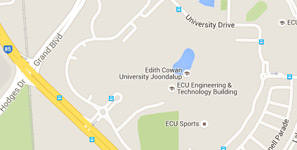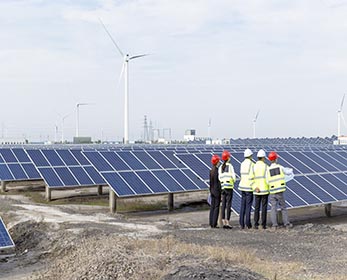This three-day course has been specifically designed for engineers, scientists, project managers, decision makers and business owners who have an interest in renewable energy. This course consists of an overview of renewable energy in the context of recent national and global strategies including a technological overview, renewable energy system design principles, and economic analysis of renewable energy projects.
Some focus areas of the course are:
- Design of different renewable energy technologies in compliance with Australian standards
- Simulation techniques of renewable energy systems using HOMER (Hybrid Optimization of Multiple Energy Resources) software
- Economic analysis of renewable energy projects including a step-by-step process of determining key macro-economic parameters, including Net Present Value (NPP) and Internal Rate of Return (IRR)
Why is this course for you
On completion of this course, participants will be able to:
- Explain the important role of renewable energy technologies in transitioning to a sustainable energy future
- Apply design procedures to renewable energy systems and projects in compliance with Australian standards
- Assess the economic feasibility of renewable energy projects
Course content
Part A: Setting the scene
Presentation:
A1. Overview of renewable energy and renewable energy technologies
This section discusses the drivers behind the current transition to renewable energy: energy diversification to increase energy security, the need to address global climate change, energy economics, socio-economics, Sustainable Development Goal 7. It looks at the challenges and opportunities and compares the costs and benefits of renewable energy technologies with other conventional power generation technologies.
A2. The current commercial status of renewable energy technologies
This section briefly looks at the commercial status of the various renewable energy conversion technologies and then looks in more detail at the three most mature technologies : hydroelectric systems, wind turbines and solar PV.
Part B: Trends in investment in RE: Global, Australia & WA :
B1. Trends in investment in renewable energy for electricity generation
This section looks at recent trends in the investment in renewable energy technologies at the global level. Some technologies are progressing more than others – both in terms of technological advancement and costs. This section presents an overview of some winning technologies.
B2. Trends in investment in renewable energy – Australia and Western Australia
This section presents an overview of the increase in the uptake of renewable energy in Australia and in Western Australia. The overview summarises the installed capacities, national and state government policies, renewable energy targets, the regulatory frameworks and non-government voluntary drivers.
Part C: Solar Photovoltaic (PV) Technology
Presentation:
C1. Different types of solar PV systems and projects
This section first briefly explains solar PV technology – PV cells, modules, and arrays. It then describes the different types of solar PV systems, starting with the simplest systems and moving toward the larger and more complex systems and their components (batteries, inverters. It also discusses challenges related to the increased use of solar PV technologies and how these are being addressed.
Day 2
Part C: Solar Photovoltaic (PV) Technology - continuedPresentation:
Case studies of solar PV systems
This section looks at emerging and new applications of solar PV technology, and presents case studies of some of the recent, planned and proposed largest solar PV projects in Australia and in the world.
Part D: Power conversion by solar PV systems
Practical (laboratory) component:
D1. Solar PV laboratory investigation
Hands-on experience of power conversion by solar PV systems using state-of-the-art lab facility at ECU
Part E: Solar PV System Design: E1. Design techniques for renewable energy systems
This section outlines the basic concepts and the steps involved in designing solar PV power supply systems. It then describes each of the steps in detail, including load estimation, battery sizing, solar resources estimation and PV array sizing, and the selection of charge controllers and inverters. for designing grid-connected and hybrid stand-alone systems
E2. Grid-connected and Stand-Alone Solar PV Systems
In this section, the different approaches used in the design of grid-connected and stand-alone solar PV power supply systems are covered, including the relevant Australian standards governing the design and installation of grid-connected solar PV systems and the procedures and requirements for connection to the distribution network.
E3. Different design and simulation tools
This section introduces some of the engineering solar simulation modelling tools that are used in the design of solar PV systems.
E4. A case study of a PV System design using the HOMER Pro simulation tool
This section briefly describes the HOMER simulation tool and then demonstrates the step-by-step process of designing a solar PV power supply using the HOMER Pro simulation software for a particular site.
Day 3
Part F: Financial analysis of renewable energy technologies/projectsPresentation:
F1. Undertaking financial analysis of renewable energy projects
This section explains the various financial analyses commonly used to assess the financial or economic performance of a proposed renewable energy project. It outlines the methods for calculating the important financial metrics of a project, such as the Simple Payback Period (SPbP), Net Present Value (NPV), Internal Rate of Return (IRR) and Levelised Cost of Electricity (LCoE). It then undertakes these calculations for a case study using a wind project.
F2. Financing mechanisms of renewable energy projects
This section presents an overview of both the conventional and new or innovative mechanisms that are used to finance renewable energy projects, including cases study examples.
Part G: Energy storage systems for renewable energy projects
Presentation:
G1. Overview of energy storage systems
This section discusses different types of energy storage systems in use or being developed, including some of the emerging technologies that are yet to be commercialised. The benefits of using energy storage are explained and common energy storage technologies are described in detail.
Part H: Renewable Energy and HydrogenThis section looks at the current high level of interest in adding hydrogen as a fuel in the energy mix. The drivers behind the rapid investment in hydrogen energy production are discussed and the various hydrogen production methods and the costs of producing ‘grey’ and ‘green’ hydrogen are discussed. Current key large-scale hydrogen projects are briefly reviewed.
Part I: Renewable Energy and Transportation
The drivers behind the efforts to increase reliance on renewable energy for transportation are discussed. The two pathway options, biofuels and electrification, are briefly discussed along with their challenges. Electric vehicle (EV) technologies are described and compared with a particular focus on comparing plug-in electric vehicles, fuel cell electric vehicles and all-electric battery vehicles. The impacts of charging EVs on electricity supply networks and charging infrastructure requirements are briefly discussed.
Date: We are planning to have the next course running in 2025.
* This course requires a minimum of 2 participants
**Discount available to ECU students, alumni and group booking from the same company
***If a participant is unable to attend the relevant course for any reason, ECU may in its sole discretion grant a refund of the fees paid or date change where the student:
- notifies ECU in writing at least 30 days prior to the relevant course or program date; or
- can provide evidence, to ECU’s satisfaction, that the absence was caused by a medical condition.ECU will notify the participant of its decision and pay any refund (if granted) within 30 days.
Participants shall not otherwise be entitled to a refund of fees in whole or part, for failing to attend any part of the relevant course or program on the day.
We are planning to offer this course in 2025. For all enquiries regarding this course and to register your interest please contact Paul Roach via email p.roach@ecu.edu.au.

